Apr 24, 2017 | Sustainable Development
By Owen Gaffney, Stockholm Resilience Center (excerpted from a post on Rethink.earth)
What will the world be like in 2050?
Of course, it is difficult to make predictions, especially about the future, as the Danish proverb goes.
Part of the difficulty is that we – individuals and the institutions that allow us to act collectively and in the long term – routinely assume the future looks very much like the past. Just as routinely, though, this assumption is flipped on its head. Think of the global financial crisis, the Arab Spring, Brexit, or the recent US election.
But what if we already know what we want the world to look like in 2050. How do we get there?
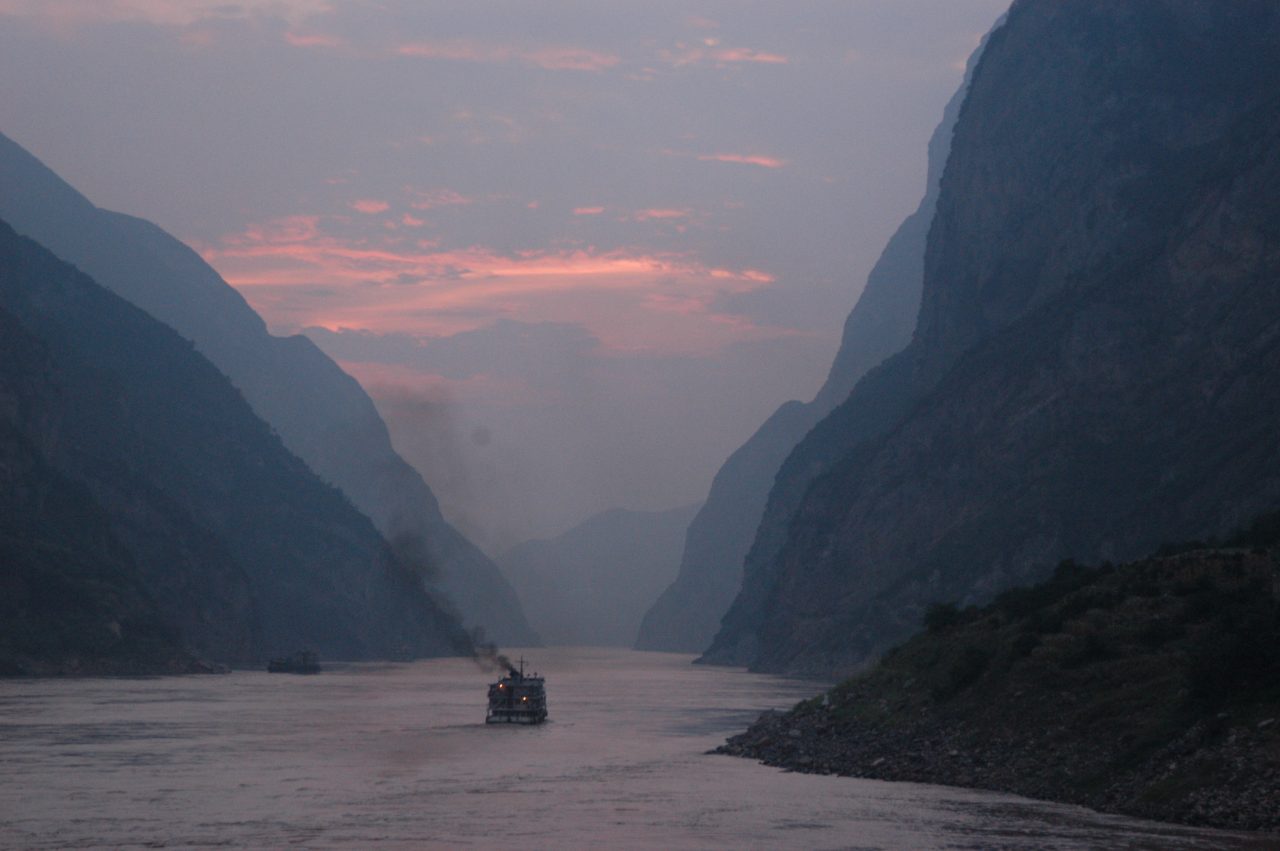
Dusk on Chang Jiang (Yangtze) Credit: Andrew Hitchcock | Flickr, CC BY 2.0,
I was reminded of the Danish proverb as I arrived at the International Institute for Applied Systems Analysis (IIASA) outside Vienna earlier this month for a three-day meeting of The World in 2050 (TWI2050) initiative. This was the third such scientific meeting hosted here at the home of some of the leading economic, demographic and energy modellers.
TWI2050 is arguably the most ambitious research being undertaken in the world today. At its heart is an ambition to map out the pathways for a sustainable planet. As with the previous meetings, it attracted about 130 complex-systems thinkers and computer-modelling experts.
Unlike other international modelling initiatives, TWI2050 was not created to explore a range of possible utopian to dystopian scenarios focusing on energy prices or climate change. The baseline assumption is a single scenario: successful completion of the Sustainable Development Goals (SDGs), agreed by all nations in 2015, and arriving in 2050 with a global economy operating within planetary boundaries – the limits of natural systems that keep Earth in a relatively stable state, relating to climate, biodiversity, deforestation, and fertilizer use, among others.
#winwin
The 17 SDGs and their 169 targets are extremely ambitious. Buried in the detail are many trade-offs but also potential win-wins. Meeting the climate goal means reducing greenhouse-gas emissions to zero, and this could affect the energy, biodiversity, or consumption goals either positively or negatively. The goals and their inherent trade-offs are already catalyzing research and the results show how challenging this will be.
This month, scientists publishing in the journal Nature explored Australia’s land-use trade-offs to reach the goals. The team, who were not at the TWI2050 meeting, used a massive computer simulation called Land Use and Trade Offs (LUTO) to see how factors such as climate policies or crop prices could shape Australia’s landscape by 2050. Exploring 648 scenarios, researchers Brett Bryan and Lei Gao found just 1% of scenarios achieved five goals simultaneously. However, some goals seemed to go better together than others. Achieving targets related to food, water, and biofuel production was possible in 6.5% of scenarios, for example. The authors, whose work contributes to Future Earth’s Global Land Programme, conclude that national policymakers need more of this type of analysis to elucidate trade-offs and avoid conflicting policies. Moreover, they argued for more scientific coordination internationally for a global perspective on implementing the SDGs.
Other research groups have also begun exploring the world in 2050. Recently Karl Heinz Erb from the Institute of Social Ecology, Vienna, who attended the TWI2050 workshop, and colleagues explored 500 scenarios to assess options for feeding 9 billion people in 2050 without further deforestation .
Their work, which also supports the Global Land Programme, concluded that it was possible, but would likely mean low meat, vegetarian, or vegan diets globally. Meanwhile, Marco Springmann from the Oxford Martin Programme on the Future of Food, also attending, and colleagues showed that by 2050 a global vegetarian diet would reduce diet-related global mortality by 6-10% and food-related greenhouse gas emissions by 29-70% – contributing to several goals. This type of research is essential to understand potential win-wins but these examples do not provide the pathways to arrive at these scenarios.
So, are computer models powerful enough to capture essential elements of incremental and disruptive change across complex issues relating to poverty, equality, education, technology, policy, energy, food, water, and climate? Read more on the Rethink.earth website
This article is excerpted from an article on the Rethink.earth website. It gives the views of the author, and not the position of the Nexus blog, nor of the International Institute for Applied Systems Analysis.
*The Stockholm Resilience Centre is one of the founding partners of The World in 2050 alongside the Sustainable Development Solutions Network and IIASA. Contributing organisations include the European Commission, Future Earth, Netherlands Environmental Assessment Agency, Potsdam Institute for Climate Impact Research, Future Earth. Check out the website for details.
References
Dec 5, 2016 | Climate Change, Environment, Sustainable Development
By Alvaro Silva Iribarrem, researcher in the IIASA Ecosystems Services and Management Program.
Restoration of degraded ecosystems is an exciting and relatively new way of looking into the conservation of natural capital—the world’s natural assets, including soil, air, water, and all living things. For one, the success of restoration is more readily verifiable than, for example, avoided degradation. Further, it increases the landscape’s resilience: natural areas can be placed around agricultural crops, increasing their yields by providing habitat for pollinators and therefore increasing pollination, protecting them from natural disasters, and improving the provision of important ecosystem services for human wellbeing.
These services include removing CO2 from the atmosphere (which contributes directly to climate change mitigation); ensuring that more sediment is filtered from the rivers (which reduces the risk of landslides and floods); and providing habitat for a large diversity of species. For scientists, it feels like being at the head of the counter-offensive: it is us, humans, finally doing something not only to slow our seemingly unstoppable degradation of the environment, but to actively start pushing it back.
Restoring an ecosystem to its original state can be an expensive endeavor, but tropical rainforests are very resilient. For example, even after centuries of extensive use of the Brazilian Atlantic Forest, which has been reduced to a tenth of its size, in many places it would still grow back to much of its original state in a manner of decades, if allowed to do so. For such ecosystems, natural regeneration represents an extraordinary opportunity to enable restoration at scales that would otherwise be cost-prohibitive.
In places like the Paraitinga watershed, in the countryside of São Paulo state, most of the original forest has long been cleared, and replaced, predominantly, by small dairy farms. After over a century of careless land use, large areas of the converted landscape has degraded to the point where yields are so low that farms are barely viable. The lack of forest cover has led to frequent floods. The worst of the recent ones, in 2010, destroyed most of the historical city of São Luiz do Paraitinga, with a population of 11 thousand inhabitants.

The aftermath of the 2010 flood in Paraitinga. © Luciano Dinamarco
In a couple of recent publications, we made a comprehensive effort to include the natural regeneration of that watershed’s native forest as part of a bigger plan for more sustainable development of the region, one that would increase its resilience to this kind of disaster.
Starting from a landscape approach, we looked at the potential for grass growth in the region, and concluded that it was possible to accommodate all foreseeable future demands for cattle production and still make space for the restoration of a large area in the watershed. Sustainable intensification of current pasture is key to avoid the economic losses that could otherwise follow the land shortage caused by such a large-scale restoration. It would also help to gain the farmers’ acceptance. By producing more in a smaller area, they could let go of the degraded areas they currently use, allowing the native forest fragments nearby to spread.
In our regeneration scenario, we assume that around 24,000 hectares of pastureland that is presently abandoned in the watershed will be allowed to undergo natural regeneration in the next 20 years. This naturally occurring forest regrowth would sequester 6.2 million tons of CO2 from the atmosphere. Additionally, it would reduce sediment load into rivers by 570,000 tons annually, bringing water purification costs in the area down by 0.37 dollars per year per hectare restored. Finally we showed that restoration of even this relatively small area would be enough to significantly increase habitat availability for all species, particularly for those which travel between forest fragments.
To understand the difficulties farmers face in improving productivity, we conducted interviews and focus groups with them. We found that the tendency to keep to their old, low-producing, land-extensive ways, is less related to a resistance to change, and more to a lack of technical knowledge and the means to make the upfront investments needed to switch to a more productive system. Credit for investment is available and cheap in the country, but only a small number of farmers in the region risk taking it. Technical assistance is key to tap into these resources and enable the necessary improvement of the watershed’s production. The conditions for unlocking large-scale forest regrowth, not only in the Paraitinga watershed but in many similar landscapes in the country, are in place—they need only to be implemented properly.
Strassburg BB, Barros FS, Crouzeilles R, Silva Iribarrem, A, dos Santos JS, Silva D, Sansevero JB, Alves-Pinto H, Feltrain-Barbieri R, & Latawiec AE (2016). The role of natural regeneration to ecosystem services provision and habitat availability: a case study in the Brazilian Atlantic Forest. Biotropics.
Alves-Pinto HN, Latawiec AE, Strassburg BBN, Barros FSM, Sansevero JBB, Iribarrem A, Crouzeilles R, Lemgruber LC, Rangel M, & Silva ACP (2016). Reconciling rural development and ecological restoration: Strategies and policy recommendations for the Brazilian Atlantic Forest. Land Use Policy.
This article gives the views of the author, and not the position of the Nexus blog, nor of the International Institute for Applied Systems Analysis.
Sep 13, 2016 | Sustainable Development
By IIASA Deputy Director General Nebojsa Nakicenovic and Caroline Zimm, IIASA Transitions to New Technologies Program and The World in 2050 (TWI2050) initiative. (Originally published on The Guardian)
2015 marked a historic turning point. The sustainable development goals (SDGs) unanimously adopted by the United Nations last September provide an aspirational narrative and specific targets for human development: a world free from hunger, injustice and absolute poverty; a world with universal education, health and employment; a world with inclusive economic growth, based on transparency, dignity and equity.
The 17 SDGs’ call for “global citizenship and shared responsibility” and provide legitimacy for a new global social contract for a grand transformation toward a sustainable future. They fully acknowledge the scientific advances achieved during the last three decades that have established compelling evidence that otherwise, as the UN general assembly warned, “the survival of many societies, and of the biological support systems of the planet, is at risk.” Humanity has pushed the Earth system and its global commons to their limits and the SDGs provide us with the long-needed paradigm shift towards realizing the opportunity of a sustainable future for all.
The climate agreement adopted in Paris last December has further strengthened understanding that our society depends on sustainable stewardship of the global commons, shared by us all – and particularly on the stability of the climate system. The Earth system can no longer be viewed as an economic or social externality. Last year we moved beyond the traditional view of global commons as merely the common heritage of humankind outside national jurisdiction. Now we must move beyond national sovereignty to deal with the Earth system and human systems holistically, as the SDGs require. The Paris agreement is a huge step in the right direction.
Time is running out, so we must take urgent action to implement the UN 2030 agenda. Just 14 years are left – less than the wink of an eye in the history of human development, or of the Holocene’s stable Earth systems. But where to start? Which of the 17 goals, which of the 169 targets should be tackled first? Policy makers, the media, civil society and scientists all ask these questions.
However, the 2030 agenda stresses that the SDGs are indivisible and integrated – and cumulative, since efforts to achieve them must be sustained well into the second half of the century, especially in preserving the regulating function of the global commons, Some of the goals, such as SDG13 on climate, must operate on a time scale longer than century.

Sustainable Development Goal 6: Clean water and sanitation.
Photo by Albert Gonzalez Farran, UNAMID
Moreover, there are interactions between and among the SDGs. For example, achieving SDG7, the energy goal, could jeopardize SDGs related to water, health and climate. Tackled in harmony, however, these goals can support one another: there would, for example, be clear health benefits from reducing indoor and outdoor air pollution through global decarbonization. Jointly implementing all the SDGs would contribute both to further human development and to safeguarding the commons and the stability of the Earth systems. Importantly, joint implementation that avoids silo-type thinking would be cheaper and faster than tackling them separately.
All these goals should be achieved in such a way as to maximize synergies and minimize investment costs and trade-offs. The SDG credo “leave no one behind” also applies to the SDGs themselves. They are indivisible. We have to deliver on all of them if we want to succeed.
The SDGs are very ambitious but it appears that tackling them together will help humanity make rapid progress and enter a new era for human societies and the Earth system. Yet, many interactions – and their scope – are unknown, and this hampers holistic policy making. We lack clear understanding of the benefits of achieving SDGs and of costs of inaction, especially when it comes to regional and national differences. We urgently need this fact-based information.
We have a plethora of knowledge, but need new ways to synthesize, integrate and share it so as to use its full potential in support of the SDGs and the global commons. Science – one of the strongest voices of the environment in governance – must become more active and leave its ivory tower to engage more intensely with other stakeholders.
This is why we at IIASA, together with the Stockholm Resilience Center, and the Sustainable Development Solutions Network have launched the scientific initiative The World in 2050 (TWI2050), designed to provide the scientific knowledge to support the policy process and implementation of the 2030 agenda.
TWI2050 aims to address the full spectrum of transformational challenges in fulfilling the SDGs in an integrated way so as to avoid potential conflicts among them and reap the benefits of potential synergies through achieving them in unison. This requires a systemic approach.
The time for “climate-only” or “economic development-only” approaches is over. We urgently need an integrated understanding of the processes that account for the inter-linkages between the economy, demography, technology, environment, climate, human development, all global commons and planetary boundaries. TWI2050 brings together leading policymakers, analysts, and modelling and analytical teams to collaborate in developing pathways towards the sustainable futures and policy frameworks necessary for achieving the needed transformational change.
Such a grand transformation goes beyond a purely technology-centered view of the world or the substitution of one technology by another. It encompasses social and behavioral changes at all levels, as well as technological ones. Incremental changes, now being experienced in some areas, are useful but will not suffice: we have waited too long and the window for action is closing rapidly in some domains including such global commons as climate. We will need radical changes in human behavior and technological paradigms. TWI2050 will look beyond 2030 to 2050 – and, in some cases, even to 2100 – to draw a vision of the world where the SDGs are eventually fulfilled.
The SDGs and the Paris agreement show what institutional international governance can achieve with joined forces. We have entered a new era of global governance, acknowledging the complexity and the connectivity of human development with the global commons and the Earth system. TWI2050 hopes to serve the global community with the best science available in tackling these key global challenges for humankind.
This article originally appeared on The Guardian.
Note: This article gives the views of the authors, and not the position of the Nexus blog, nor of the International Institute for Applied Systems Analysis.
Sep 2, 2016 | Communication, Sustainable Development, Women in Science
By Daisy Brickhill, IIASA science writer and editor.
“If you are the first to break a glass ceiling, you’re the one who gets scratched.” Tarja Halonen is a first for many things. She was the first female trade unions lawyer in Finland, the first female foreign minister for the country, and its first female president. She was also the first ex-president to spend her sabbatical at IIASA, meeting staff and discussing the institute’s work.
With a career rooted in social justice and a firm commitment to human rights, Halonen was eager to engage all at IIASA in discussions on equality and diversity, both within the institute and in wider society.
Damaging gender stereotyping was a theme which was touched on often in the Women in Science session, a meeting of female scientists from all disciplines and of all ages from around the institute. Halonen spoke of her own experiences of the monotonous gender pigeon-holing she experienced in politics “If you are married as a female politician you are either there because you have a strong man behind you or you are neglecting your family. And your appearance is always fair game. I remember the media saying that my handbag was too big. I was betraying the people of Finland with my big handbag!”
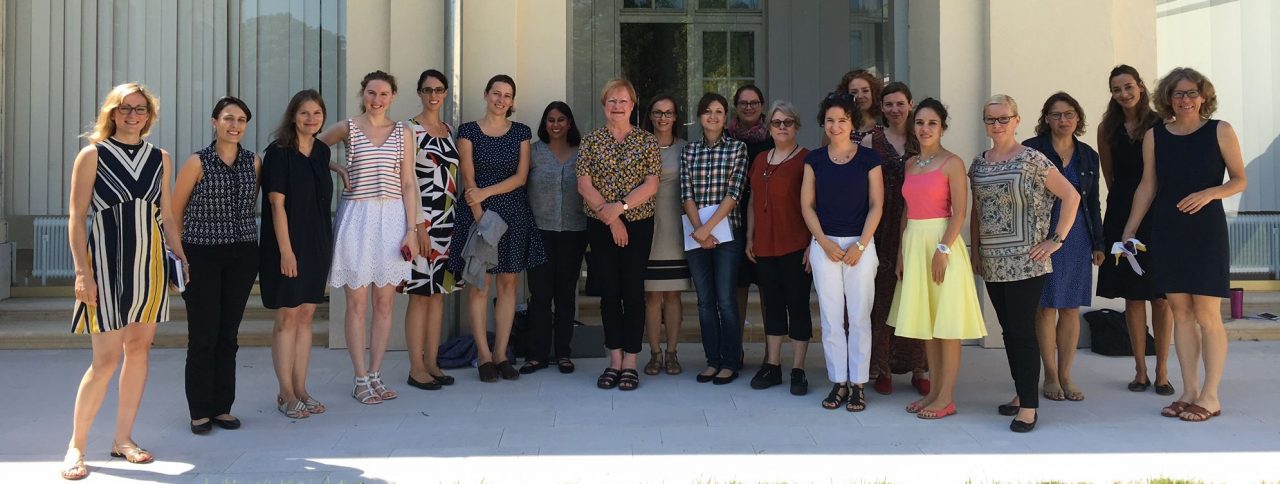
Women in science session with President Halonen at IIASA. © Michaela Rossini | IIASA
A key stereotype that can strongly affect both women and men is that childcare is “women’s work,” and as such unimportant. Parents of both genders should be supported to be active members of their own family. Men are often excluded from this—there is no statutory paternity leave in Austria, for instance—and women, expected to take on the majority of caring, are in turn excluded from their careers at a key point, especially if childcare services are poor or prohibitively expensive.
So how do we change things? All participants were eager to discuss ways of improving the situation. We can start by working from the bottom up, Halonen urged, doing everything we can in our immediate environments to improve things. Discuss diversity and equality issues as often as you can with as many people as you can. Be aware of your own unconscious biases, perhaps attend training to help challenge yourself, not just about gender but all types of diversity. Build pressure by enlisting the help of those outside your workplace too—visitors, funders, boards, and committees.
At this point in the Equality and Diversity session the door opened to admit IIASA Director General and CEO Professor Pavel Kabat, and Halonen turned to him with a twinkle in her eye: “Ah Pavel, we are so pleased to see you! You have come at exactly the right time, we were just discussing how we can change you and the whole institution.”

President Halonen and Prof. Dr Kabat © Katherine Leitzell | IIASA.
Engaging with the discussion, Kabat said “We are looking into improving things at IIASA, especially through our new human capital management.”
Importantly, the case is not hard to make: diversity and equality is good for everyone. “Even if we limit our argument to money alone we can still see clear benefits,” says Halonen. “Giving women more equality in Finland actually caused a rise in the country’s GDP. Turns out it wasn’t a smart financial decision to exclude half the population.” What a surprise.
Top-down measures also have their part to play. Quotas for gender balance—on panels or in committees for instance—can be controversial but they needn’t be, says Halonen briskly. “Set the limits at 40:60 in either direction, and remember, quotas are not the end point, they are a step towards something.” Seeing women in positions of power is important not just as role models for other women, it is important for men, young men and boys in particular, who will grow up happy to work for a female boss, and benefit from collaborations with female colleagues based on mutual respect.
Compulsory paternity leave is another controversial top-down measure that may help change attitudes. One participant in the Equality and Diversity session said that he would welcome this, and not only on a personal level. “I can imagine it would benefit not just the individual fathers and children but society as a whole, IIASA should do studies on this.”
There is hope in the air. As part of the Sustainable Development Goals all 193 member states of the UN have agreed that we need to achieve gender equality. Despite this, change won’t come as a single revolution, Halonen warned, it will come bit by bit as attitudes and rules slowly change. IIASA, as a thought-leader on sustainability transformations, can be a pioneer. After all, having equality and diversity at IIASA, an institute that aims to tackle problems across the globe, bridging cultures, peoples and genders, can only improve our science.
Further info
Dialogue session with Fischer, Halonen, and young scientists: World Leaders and future thought leaders
Lecture by Her Excellency Tarja Halonen
Note: This article gives the views of the author, and not the position of the Nexus blog, nor of the International Institute for Applied Systems Analysis.
Aug 30, 2016 | Sustainable Development
Michael Perkinson is the chief of staff to the chief investment officer at the asset management firm Guggenheim Partners in the US. On 28 and 29 August he took part in a meeting of the Alpbach-Laxenburg Group, focused on new models for sustainable business development, and on 30 August he spoke at the European Forum Alpbach Political Symposium.
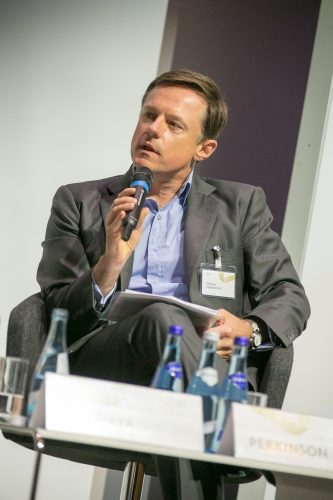
Michael Perkinson speaks at the European Forum Alpbach. ©Matthias Silveri | IIASA
As a business leader with a background in international relations, you have unique experience in both government and the private sector: How do you think that the two could work together towards achieving the sustainable development goals?
Traditionally, the two sectors have not mixed well. Governments were skeptical of the private sector’s profit motives and the private sector believed government was an impediment. Both views were, of course, short-sighted. In recent years the United Nations has looked to the private sector to help finance development as the traditional levels of fiscal policy have been removed from the toolkit by increasingly narrowly focused legislatures. Similarly, private investors and private enterprise, who make up over 60% of GDP in the developed world, realize that they can partner with governments to achieve their social goals. Yes, businesses now have social goals.
What do you see as the biggest challenge is in achieving the SDGs?
Money and willpower.
What changes would be needed in business in order to fully embrace the SDG agenda?
I suspect that businesses need to understand how they can contribute. If given the option of a regulation or a tax, businesses will always chose a tax, because it allows them to plan accordingly. So, in this case, I think businesses require an explanation as to how they can contribute and how it won’t interfere with their executing on their business plan.
Business is often seen as “part of the problem” when it comes to issues like climate change and poverty – do you think that sustainable development could also bring opportunity for business, and if so, how?
Having been in the public sector for 25 years before returning to the private sector, I have never seen the private sector as part of the problem. In the United States, the private sector contributes some 80% of GDP. The private sector also provides jobs, which is really the only way that poverty can be eliminated on a generational scale. I think that there is ample opportunity for business to contribute to the SDGs, but the public sector needs to explain clearly how businesses can contribute in a way that doesn’t interfere with their business plan. It doesn’t mean that businesses need an inducement (like a tax break), they just need to understand the strategic logic of the concept.
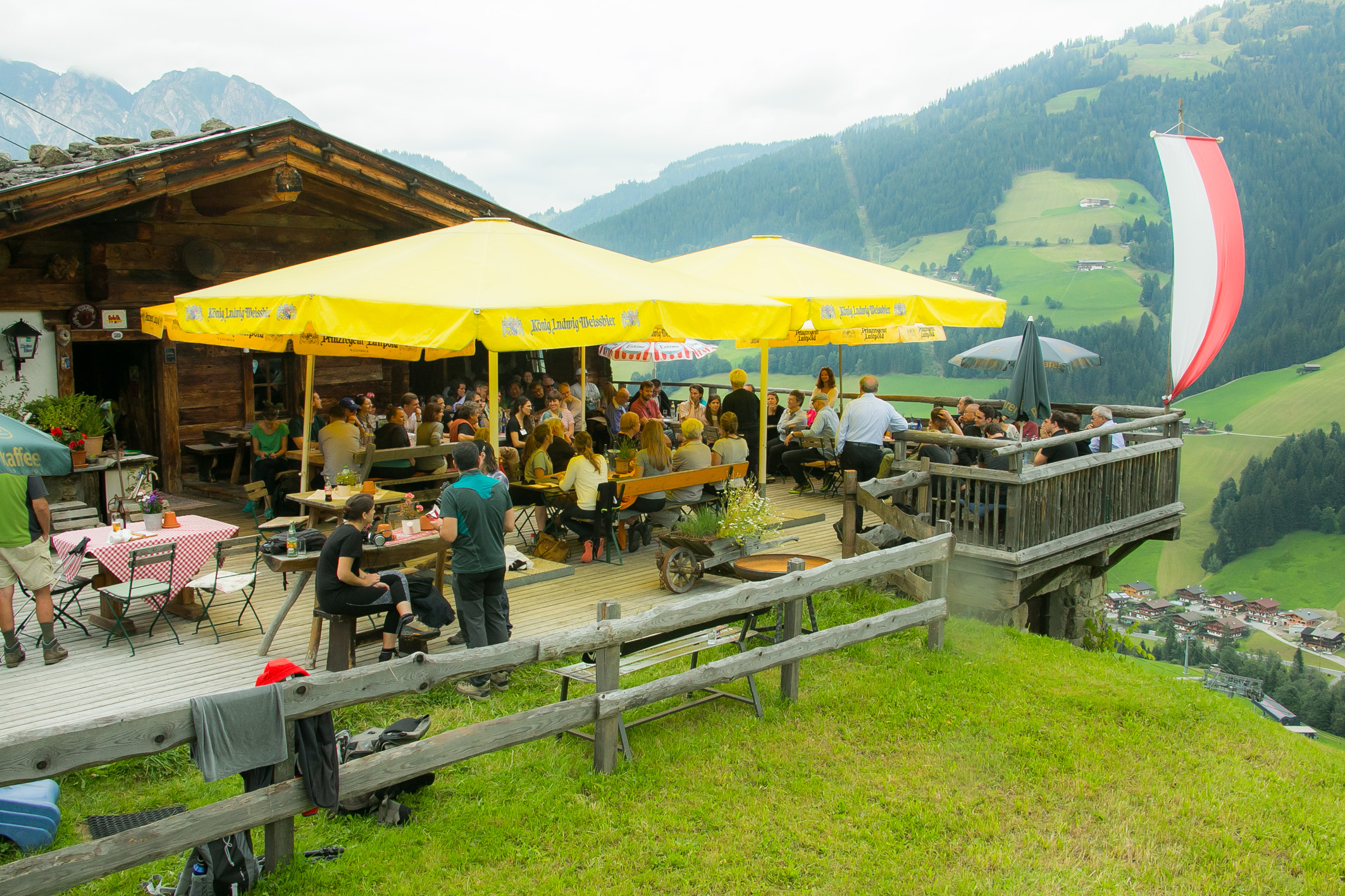
Meeting of the Alpbach-Laxenburg Group, 29 August 2016. ©Matthias Silveri | IIASA
Interview conducted and edited by Katherine Leitzell, IIASA science writer and press officer
Note: This article gives the views of the interviewee, and not the position of the Nexus blog, nor of the International Institute for Applied Systems Analysis.
Aug 29, 2016 | Sustainable Development
Pascal Lamy was the director general of the World Trade Organization from 2005 to 2013, and currently serves as a president emeritus of the Notre Europe – Jacques Delors Institute. On 28 and 29 August he is taking part in a meeting of the Alpbach-Laxenburg Group, focused on new models for sustainable business development.
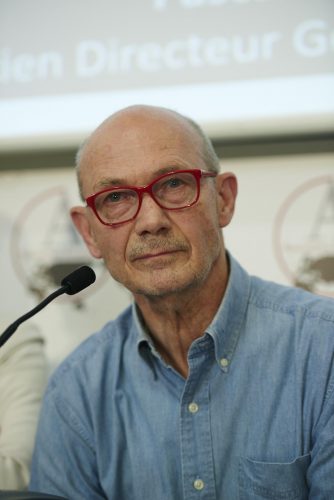
Pascal Lamy ©The Jacques Delors Institute
As the former director general of the WTO, you have extensive experience in global trade and economic development. How does this background inform your perspective on the issues of the sustainable development?
To put it very simply, there is a very well-understood interaction between trade and growth, starting in the 18th century until now. The understanding of the relationship between global trade and sustainable development, i.e. including the environment dimension, is much more recent, understandably because environmental issues only came into the picture much more recently than the 18th century.
The reality is today that the communities working on trade and environmental issues are rather poorly connected. You belong either to one or to the other. There are not that many people who have feet on both sides, which does not help because the issue is complex.
In theory it’s very simple. Take climate change for instance: If you put the carbon price at the proper level, i.e. the one that takes into account the externalities of climate change and CO2 emissions, all you have to do is price CO2 properly, and problem is solved: markets will reallocate production factors accordingly. That’s what theory tells us. The little problem is actually agreeing on a set price for the entire planet. And this triggers a lot of suboptimal propositions, solutions.
I think that the overall stance now is that that trade is not an end. Trade is a means to improve growth in climate, welfare, sustainability, including environment sustainability. This was in fact part of the WTO charter from 1994. When I was DG of the WTO we did quite a lot of work in collaboration with environmental international organizations such as UNEP for instance. We looked into the big question on this topic: Is the expansion of trade good or bad for the environment? There are arguments on both sides, and it is a vast set of issues. But overall I think there are ways and means to reconcile, to synergize the benefits of trade opening for a more environmentally sustainable world.
What do you see as the biggest challenge in achieving the Sustainable Development Goals?
It’s a very long and vast set of issues. So it’s not a single thing—what you have to address issues on inequality, on education, on oceans, on poverty—it’s a lot of different things.
But overall, I think the biggest challenge—and this is why a number of us are working on that—is to properly organize the accountability of these SDGs. That means providing proper metrics, proper review, proper debate, and proper public accountability. Now that the goals have been agreed by the UN, the issue is whether or not they can be achieved, and whether we can properly organize public pressure on sovereign nation states, through civil society, involvement of businesses. So in my view the main issue is building and agreeing on a proper follow up transparency system.
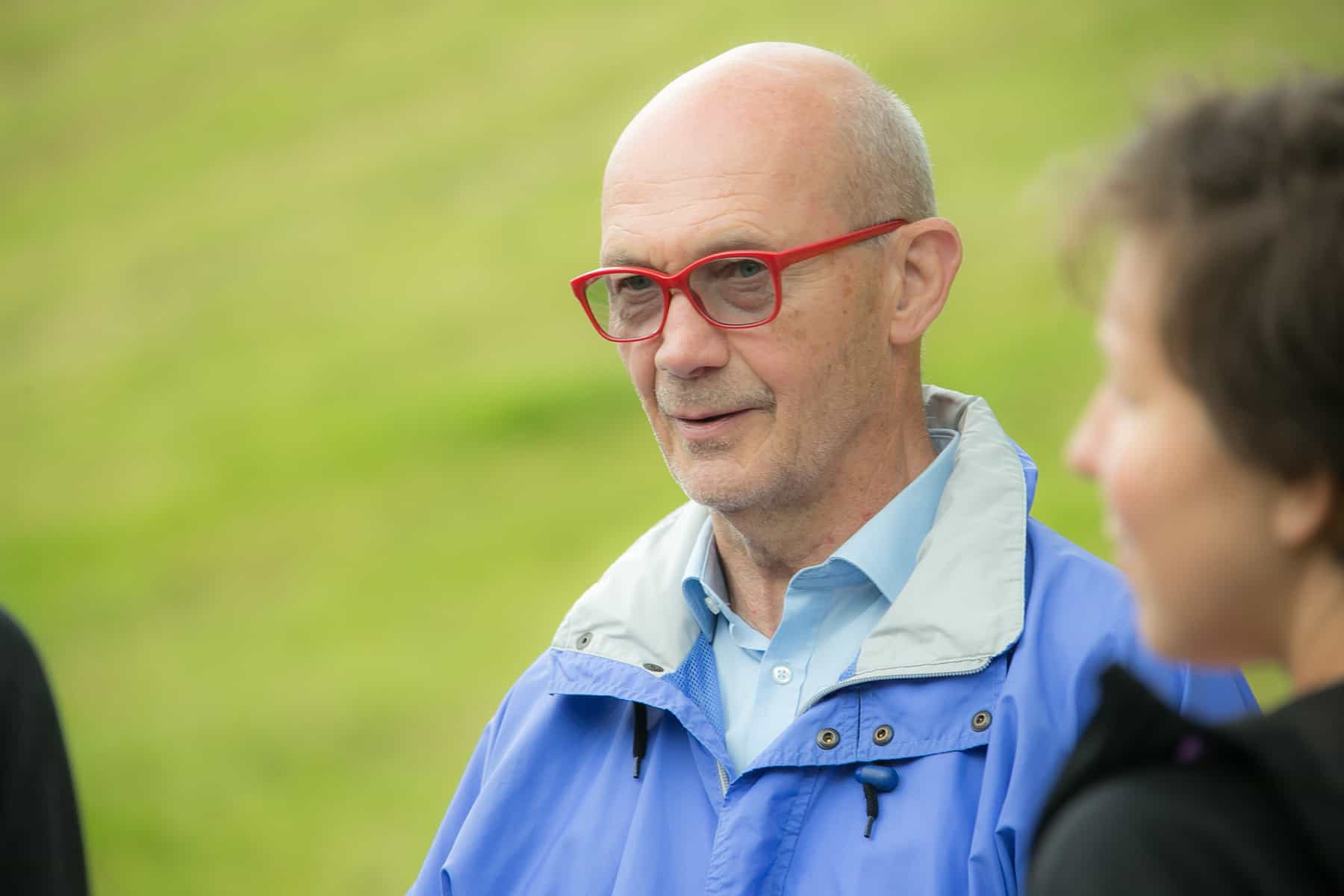
Pascal Lamy talks with other members of the Alpbach-Laxenburg Group at a retreat on 29 August. ©Matthias Silveri | IIASA
How do you think that the private sector could help in achieving the SDGs?
In doing what private businesses have been doing increasingly, which is integrating this sustainable development focus into their global strategies. Most big businesses now have a set of principles, a set of values that include sustainability.
What’s happening for instance around the push towards green finance, notably since the COP21 in Paris, is a good example of how some businesses can be on the front line of a larger coalition. We need coalitions like this to bind public authorities at the national, regional, and city levels, to civil society organizations focused on sustainability, climate, environment, biodiversity, and development, and businesses, whether big or small.
So from your perspective it sounds like business is already on the right track. What further changes would be needed in the private sector in order to fully embrace the SDG agenda?
It will happen if and when businesses realize that it matters to their consumers, to their staff, and to their shareholders, or their finance providers more generally. This is the frame within which they have to optimize what they do—clients, consumers, their people, and where they get their financial resources from. And if these various sides of the triangle push in that direction, inevitably businesses will push in this direction. They’ll have to.
The Alpbach-Laxenburg Group brings together leaders from business, and young entrepreneurs, along with government leaders and science experts. What do you think can be gained from a meeting of this type?
What’s unusual is that it links you with people whom you may not meet every day, so it’s an occasion of diversity connecting on a topic. Plus, there is something which tends to come out of this sort of environment, which is innovation. People exchanging ideas, not just theoretically, “What should we do?” “Where are we?” “Where are we going?” but, “This is what I suggest to do,” “This is what I tried and it worked,” and “This is what I tried and it didn’t work.” It’s more about experiences on the ground, which may then inspire more general conclusions.
Further reading
Pascal Lamy (2016). “Négociations climatiques et négociations commerciales : antinomie évidente ?“. Speech delivered at the 24th Meeting about Risk Management, AMRAE, at Lille, France, February 5th 2016. Download speech (PDF)
Pascal Lamy (2013). The Geneva Consensus: Making trade work for all. Cambridge University Press http://www.cambridge.org/ao/academic/subjects/law/international-trade-law/geneva-consensus-making-trade-work-all
Interview conducted and edited by Katherine Leitzell, IIASA science writer and press officer
Note: This article gives the views of the interviewee, and not the position of the Nexus blog, nor of the International Institute for Applied Systems Analysis.










You must be logged in to post a comment.